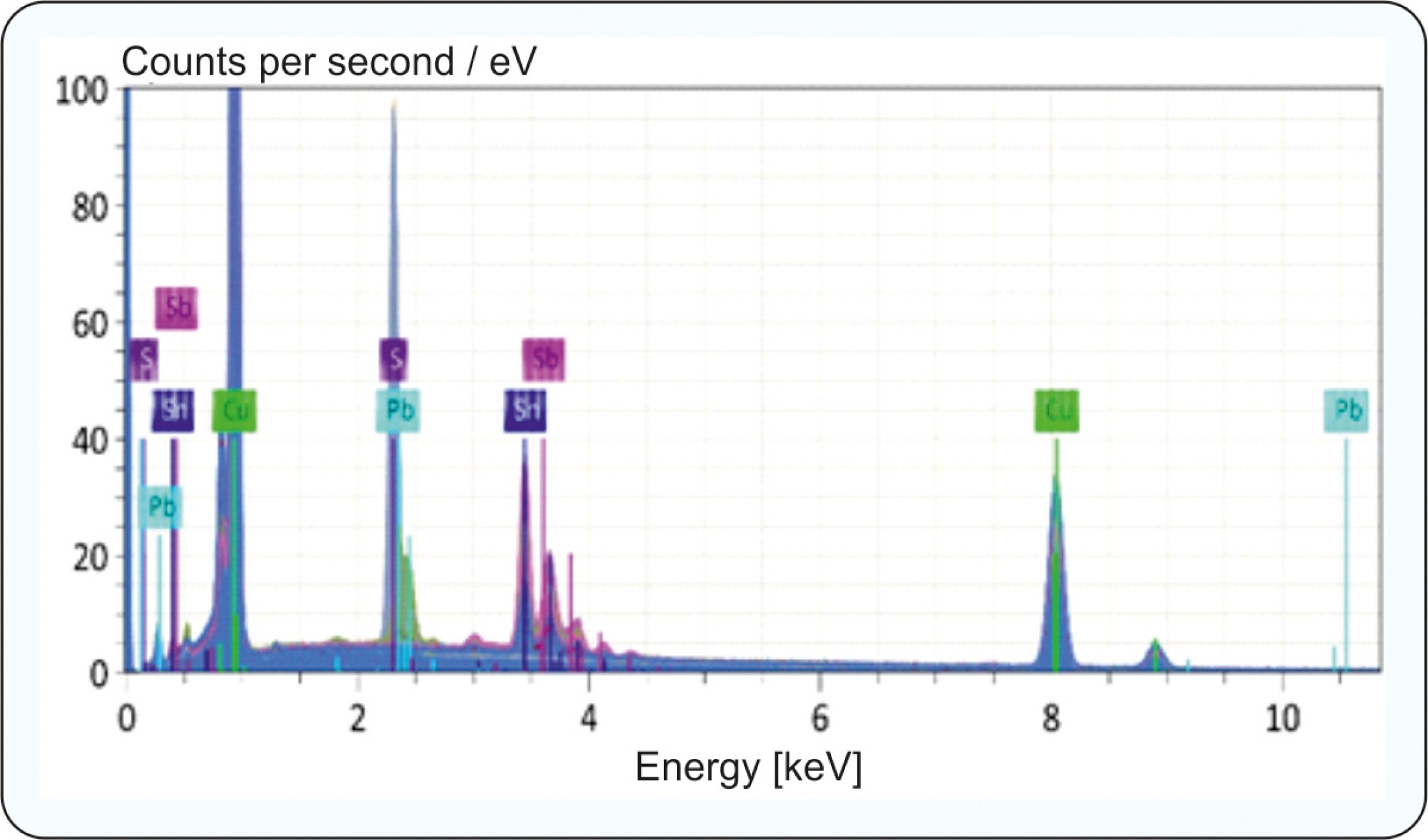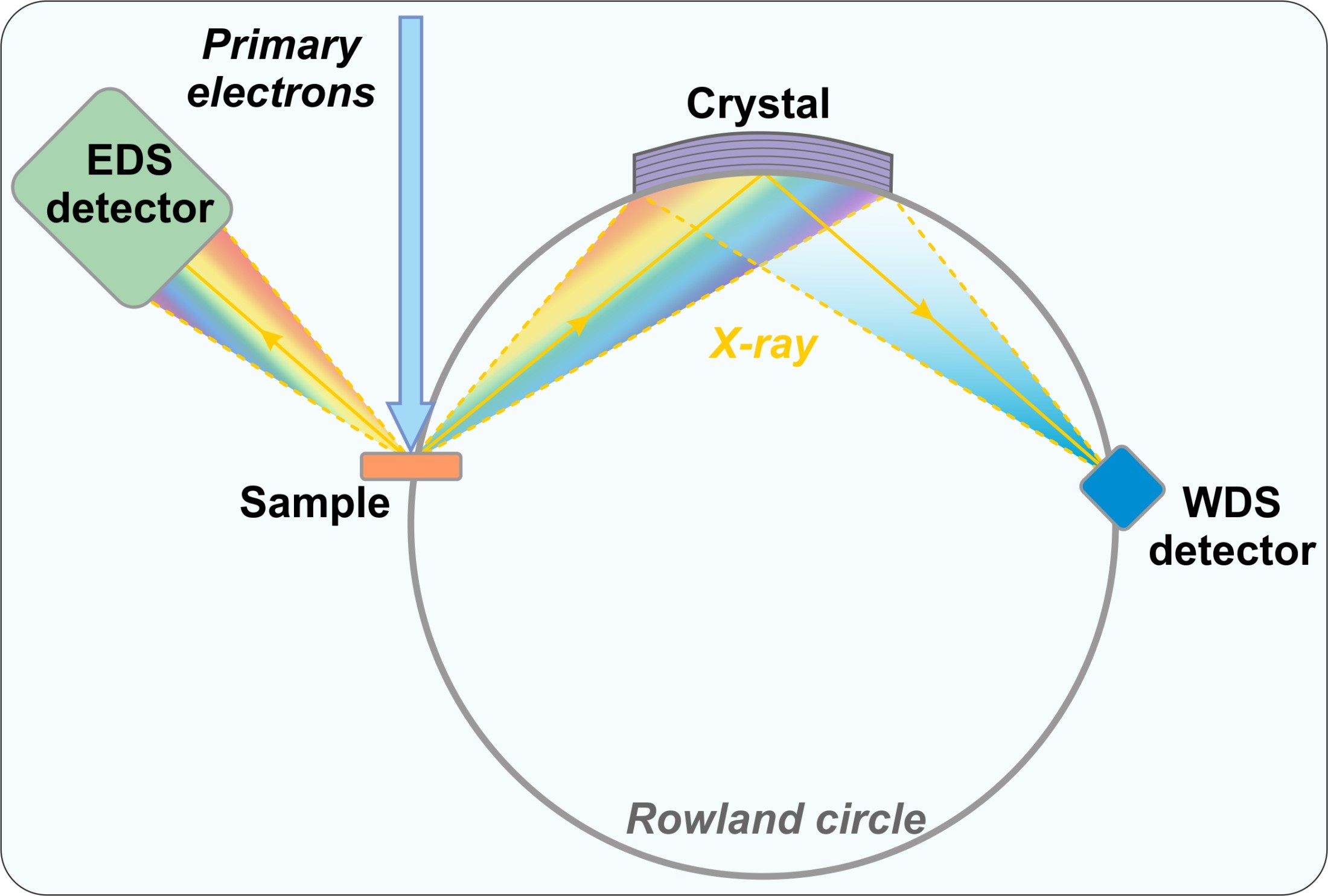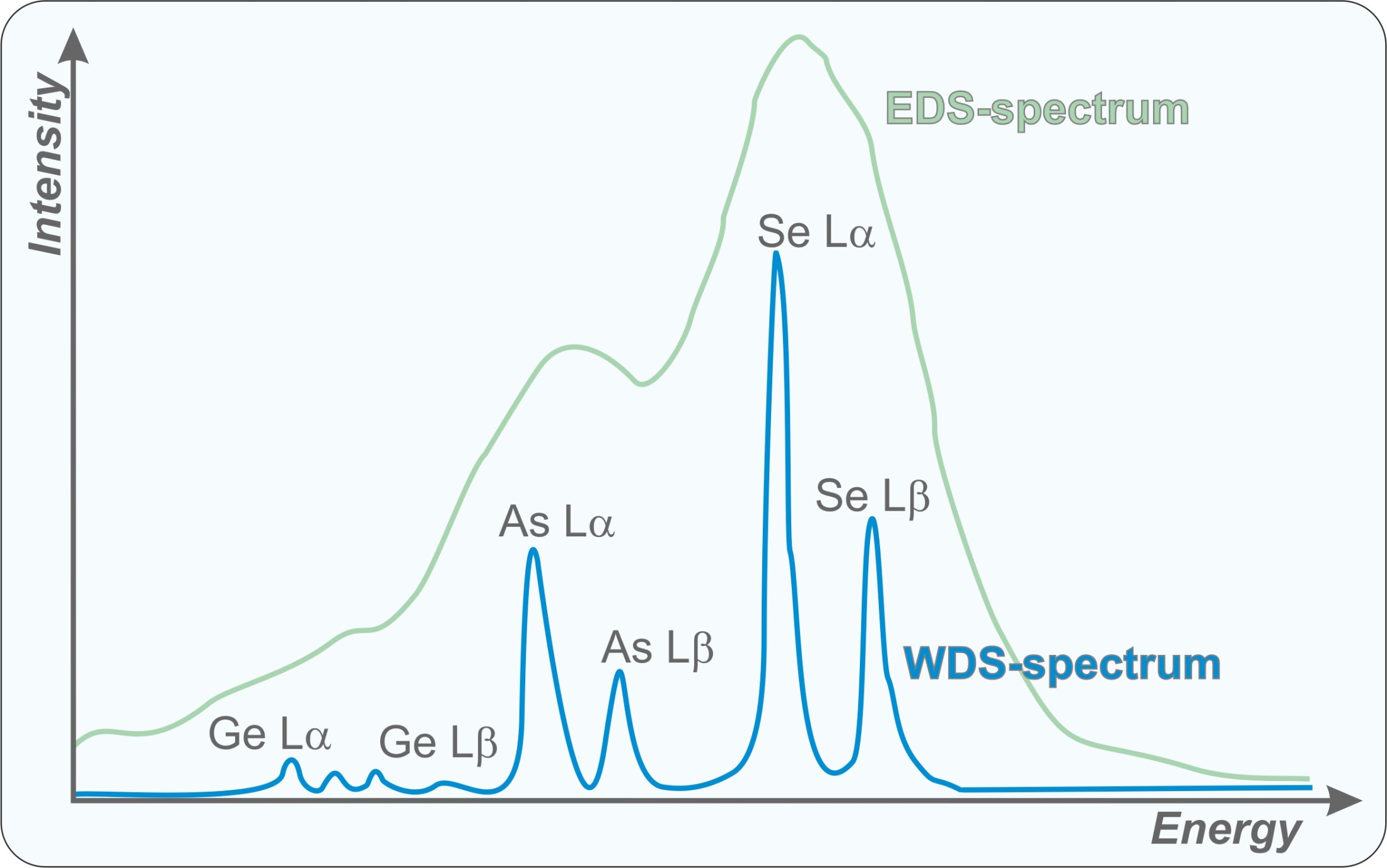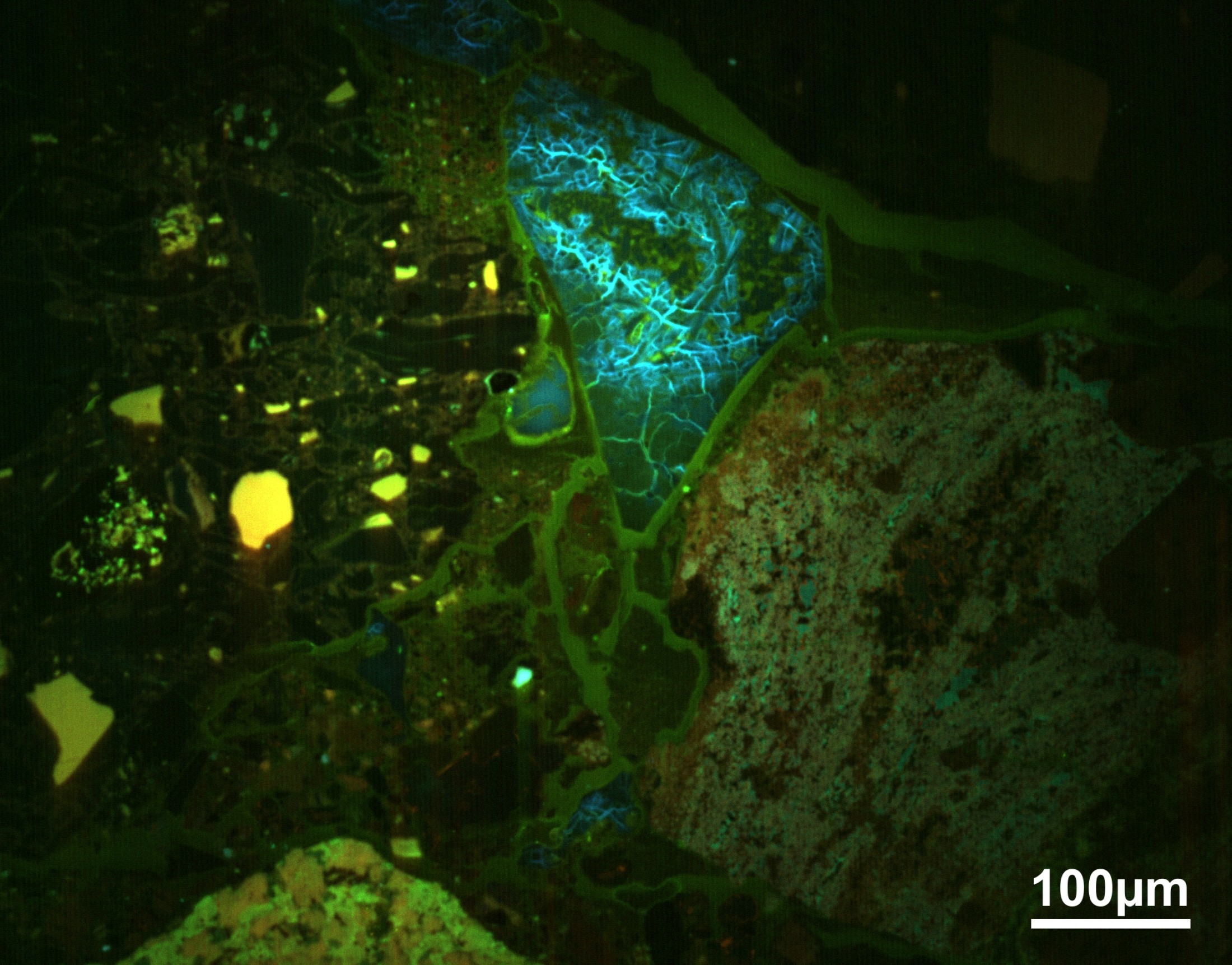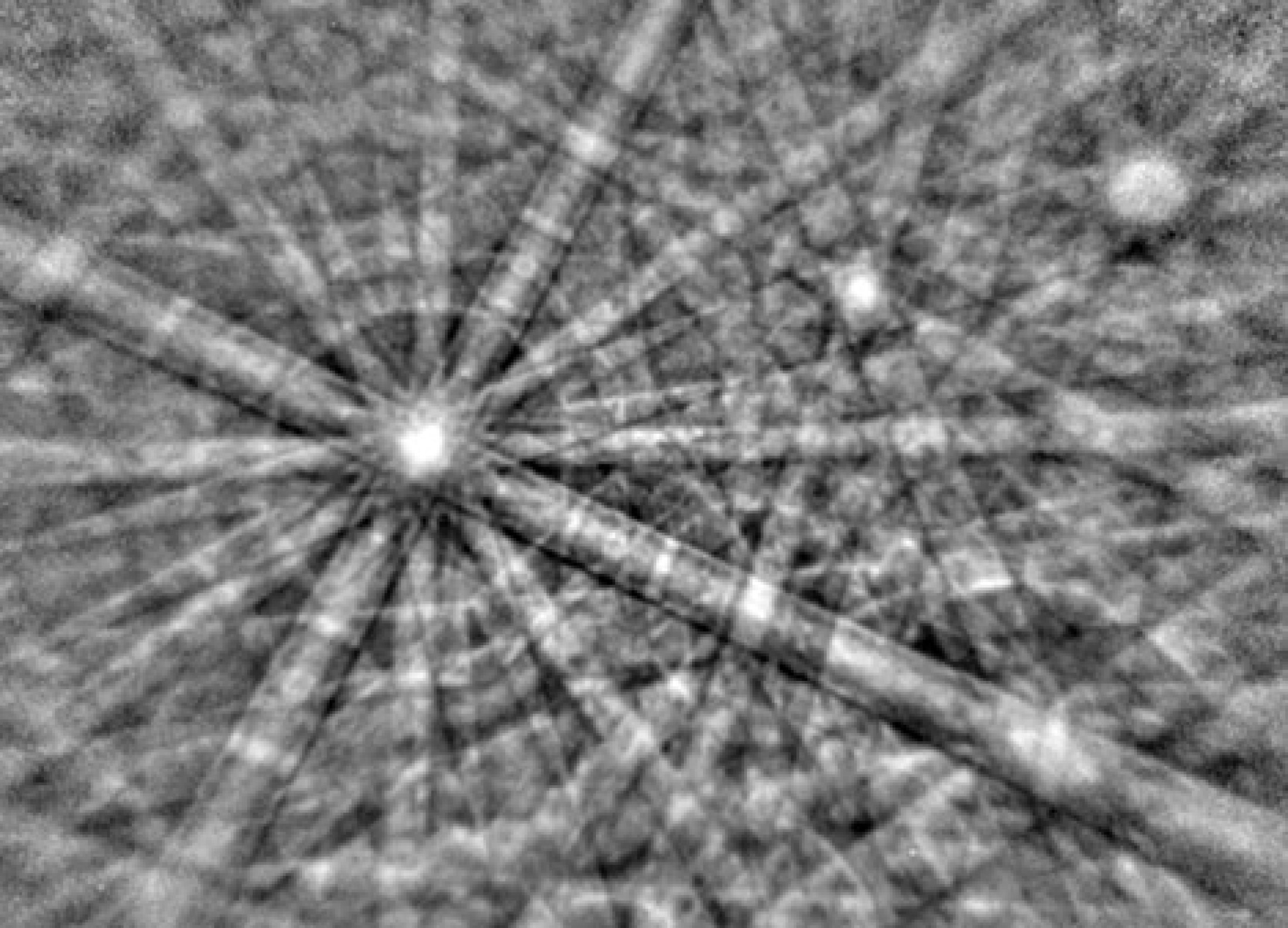Analytics
Backscattered electron (BSE), characteristic X-ray, and cathodoluminescence (CL) signals are used to get different information about the sample. X-rays are used for chemical characterization of the sample. CL and BSE are used to obtain structural and chemical information from the material analyzed.
Energy-Dispersive Spectrometry (EDS)
The energy-dispersive spectrometry (EDS) is a method used for rapid identification of elements (qualitative analysis) and elemental abundances (quantitative analysis) in a point or an area of a solid sample, using a solid-state (energy-dispersive) detector. The detector collects and counts all of the emitted X-rays at once, sending the energy and number of a specific photon type into a proper energy channel. All X-ray energies from 0 to 25 keV are collected and displayed simultaneously as an energy spectrum in which the characteristic X-ray lines of the existing elements are displayed (section from an energy spectrum see figure).

